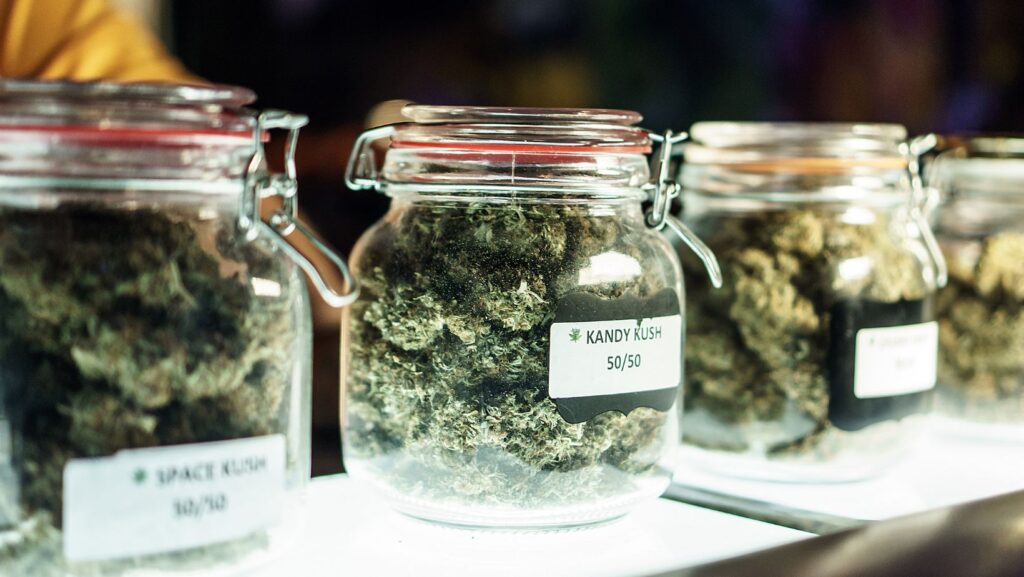
Cannabis cultivation, an art as ancient as agriculture, has evolved through centuries into a sophisticated practice that balances nature’s simplicity with scientific precision.
The resurgence of organic methods has become more than just a trend—it’s a conscientious return to basics, aligning with ecological and personal health values. In the pursuit of naturally boosting the cannabis growth cycle, understanding the plant’s needs and optimizing its environment holistically can significantly enhance both yield and quality.
This guide delves into proven, natural techniques that not only support sustainable cultivation practices but also empower growers with the knowledge to elevate their cannabis gardening endeavors.
Understanding the Cannabis Growth Cycle
Lifecycle Overview
Cannabis plants, like all living organisms, go through a series of stages in their lifecycle: germination, seedling, vegetative, flowering, and harvesting. Each phase has distinct light, nutrients, and water requirements, pivotal for healthy growth.
Germination jump-starts the cycle, leading to the seedling phase, where light is crucial for development. The plant undergoes significant growth during the vegetative stage, requiring increased nutrients and water. The flowering stage is when buds form and mature, necessitating precise light exposure and continued nutritional support. Finally, the harvesting phase concludes the cycle, with timing being essential to ensure optimal potency and flavor.
Natural Enhancements for Each Stage
- Germination: Soaking seeds in a solution of water and natural enzymes can accelerate germination and boost initial root development.
- Seedling: Introducing beneficial mycorrhizae fungi early can enhance root absorption capabilities, improving nutrient uptake and resistance to stress.
- Vegetative: Implementing companion planting with herbs like basil can deter pests, while organic compost teas enrich soil microbiology, promoting vigorous growth.
- Flowering: Adjusting light quality using full-spectrum LEDs can mimic natural sunlight, encouraging robust bud development.
- Harvesting: Curing buds in natural fibers like hemp bags can enhance flavors and aromas, preserving the integrity of terpenes and cannabinoids.
Optimizing Soil Health Naturally
The Foundation of Growth
Soil is not just a medium for holding plants in place; it’s a living ecosystem that sustains and nurtures cannabis throughout its lifecycle. Rich, well-structured soil enhances root penetration, water retention, and aeration, which is essential for healthy plant development. Organic matter, such as compost and aged manure, is key to building soil fertility, offering diverse nutrients and beneficial microorganisms. These components synergistically promote vigorous plant growth and resilience against pests and diseases.
Natural Amendments and Techniques
Incorporating green manures, covering crops like clover or alfalfa, and crop rotations can significantly improve soil structure and fertility. These practices add vital organic matter to the soil and help fix atmospheric nitrogen, suppress weeds, and prevent soil erosion.
For immediate nutritional boosts, organic amendments such as bone meal (for phosphorus), greensand (for potassium), and fish emulsion (for nitrogen) can be applied.

These natural fertilizers supply essential nutrients in a form readily accessible to plants without the harsh side effects associated with synthetic alternatives.
Leveraging Light and Water
Harnessing the Power of the Sun
Light is the primary energy source for cannabis, driving the photosynthesis process that fuels growth and development. While indoor cultivation allows for precise control over lighting, mimicking the natural spectrum of sunlight can significantly benefit plant health.
Full-spectrum LED lights are an energy-efficient option that balances blue, red, and white light, catering to the plant’s needs throughout different growth stages. For outdoor growers, selecting a site with optimal sunlight exposure—typically a south-facing location—ensures that plants receive ample light without excessive heat stress.
Efficient Water Management
Water is vital for transporting nutrients within the cannabis plant and maintaining cellular functions. However, overwatering can lead to root rot and nutrient deficiencies, while underwatering stresses the plant, hindering growth.
Implementing a drip irrigation system can conserve water and deliver it directly to the roots, reducing waste and the risk of overwatering. Collecting rainwater is another sustainable practice, providing a natural, soft water source free of chlorine and other chemicals commonly found in municipal water supplies.
Natural Pest and Disease Management
Preventative Strategies
The best approach to pest and disease management is prevention. Cultivating a diverse garden ecosystem with various plants can attract beneficial insects that prey on common cannabis pests. Companion planting with species such as marigolds can deter pests naturally with their pungent aroma. Regular inspection of plants allows for early detection of issues, enabling prompt action before problems escalate.
Organic Solutions
Should pests or diseases arise, several organic remedies can be employed.
Neem oil, an extract from the neem tree, is effective against many pests and fungal diseases without harming beneficial insects. Insecticidal soaps and horticultural oils offer a non-toxic way to control pest infestations, disrupting the pests’ cellular membranes upon contact. For fungal issues, a solution of baking soda and water can act as a foliar spray to inhibit fungal growth.
Understanding the balance between effective pest management and maintaining a health-conscious cultivation environment can be complex. This detailed article provides an in-depth look at organic pest control methods and their benefits for plant and consumer health. Learn more at Sacramento Bee: Cannabis Health and Wellness
Conclusion
Elevating your cannabis cultivation through natural methods is a testament to traditional agricultural wisdom and a commitment to sustainability and health.
By understanding the nuanced needs of the cannabis plant at each stage of its growth cycle, optimizing soil health, leveraging natural light and water resources, and employing organic pest management strategies, growers can achieve bountiful, high-quality harvests.
This holistic approach not only ensures the well-being of the plants but also contributes to the environmental integrity and fosters a deeper connection between the grower and their garden. In embracing these practices, we align with the rhythm of nature, cultivating not just cannabis but a legacy of stewardship and harmony with the earth.













